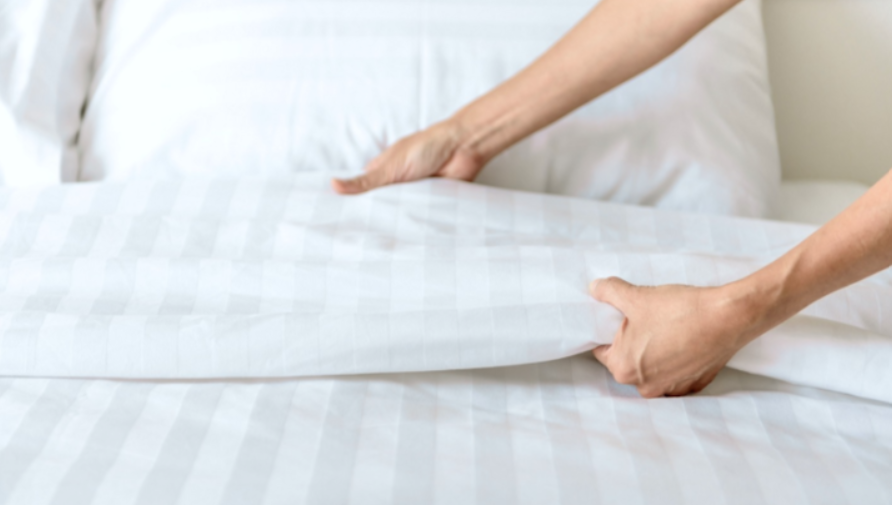Most people wash and fully dry their sheets before making the bed. But some, like your husband—who learned it from his mother—prefer using sheets that are still slightly damp. It may sound strange, but there’s actually some logic behind it.
What’s the Damp Sheet Method? Instead of waiting for sheets to dry completely, this method involves placing them on the bed while still damp. As they finish drying naturally, they smooth out on their own, which means fewer wrinkles and no need to iron.

Where Did It Come From? This method likely dates back to when dryers weren’t common. People would air-dry sheets and often use them before they were fully dry. It became a practical trick passed down in some households.
Why People Use It
-
Fewer wrinkles – Damp sheets flatten as they dry, reducing the need for ironing.
-
Cooling feel – In warm weather, the slight moisture can feel refreshing.
-
Saves time and energy – No long dryer cycle or ironing required.
But There Are Downsides
-
Mold or mildew – Especially in humid climates, damp sheets can create a breeding ground for odor and mold.
-
Cold discomfort – In cooler weather, damp bedding may feel too chilly to sleep on.
Expert Opinions Experts are divided. Some like the smooth finish and energy savings. Others caution that dampness can damage fabric or encourage mildew. They recommend only trying it in dry, well-ventilated spaces.
Quick Comparison
-
Dry Sheets: Warm, clean, safe—but may need ironing.
-
Damp Sheets: Smooth, fresh, time-saving—but risk mildew and cold discomfort.
How to Try It Safely Ventilate the room well, use a fan or dehumidifier, and make sure sheets are just slightly damp—not wet. Always inspect for any signs of mildew.
What People Say Some love the wrinkle-free look and fresh feel. Others have had mildew issues or found it too uncomfortable. It depends on your home and climate.
